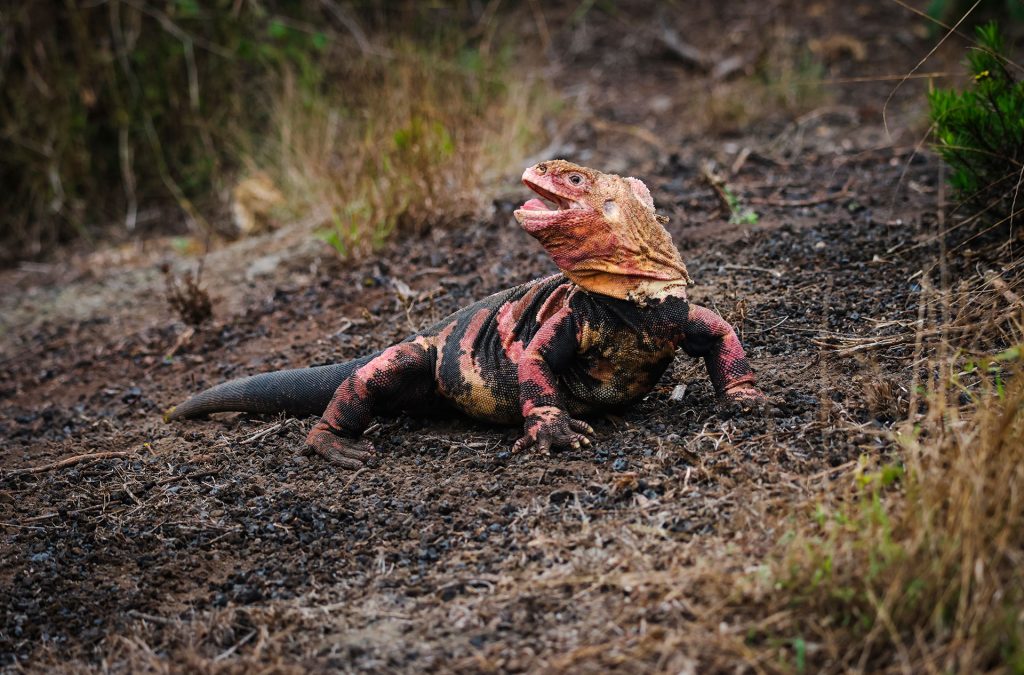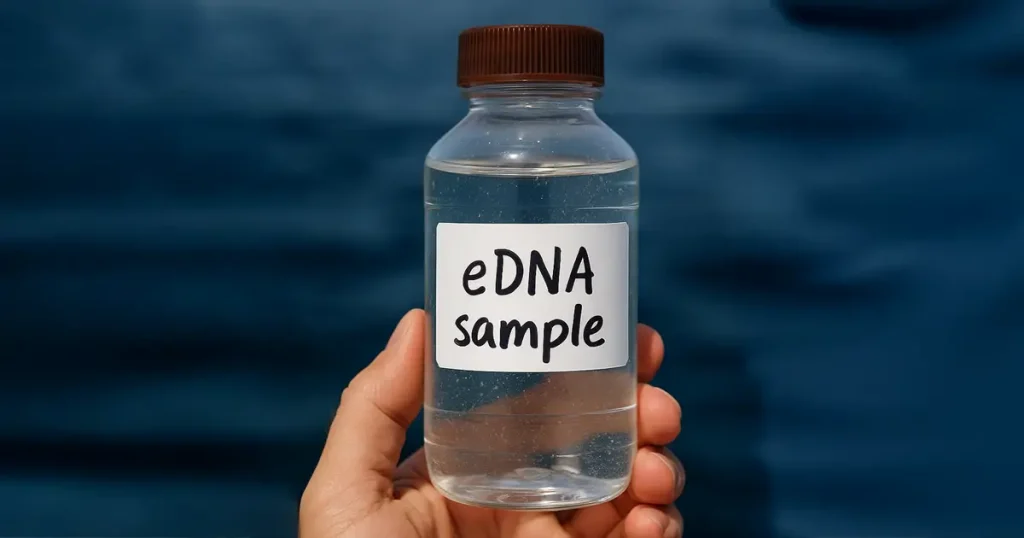Successful Monitoring of Pink and Yellow Iguanas, Giant Tortoises at Wolf Volcano
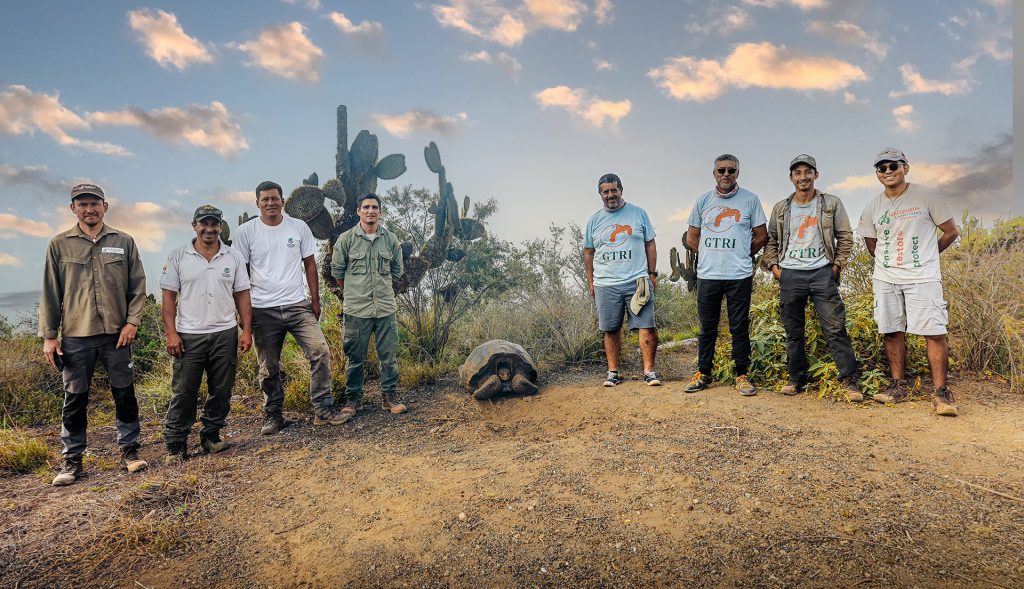
In 2023, we ended the year with a remarkable conservation effort by undertaking a successful expedition from December 7 to 16 to the remote Wolf Volcano on Isabela Island. The dedicated team, comprising 15 conservation enthusiasts – including six park rangers from the Galápagos National Park Directorate and nine scientists and technicians from Galápagos Conservancy – collectively devoted over 1500 hours of work and effort. Their mission was to execute a series of strategic actions, all aimed at collecting crucial information for the protection of the region’s iconic wildlife, including the pink iguanas, yellow iguanas, and the majestic giant tortoises that call this unique area home.
Unwavering Efforts to Conserve the Pink Iguana
The expedition team conducted a thorough search for neonates, juveniles, and adult pink iguanas (Conolophus marthae) in their habitat. Despite the challenges posed by dense vegetation and the small size of the neonates, the team successfully discovered two juveniles and one subadult individual of C. marthae. This discovery holds great significance, marking the first instance where three pink iguanas between two and five years old, were found during a single expedition. Our General Director, scientist Washington Tapia, emphasized that “this finding is historical and gives hope for the better future of this endangered species.”
Simultaneously, the team monitored the yellow iguana (Conolophus subcristatus) population, which coexists with the pink iguana. In addition, they gathered detailed data from approximately 75 permanent plots, established in 2014, to comprehensively characterize the habitats of both species.
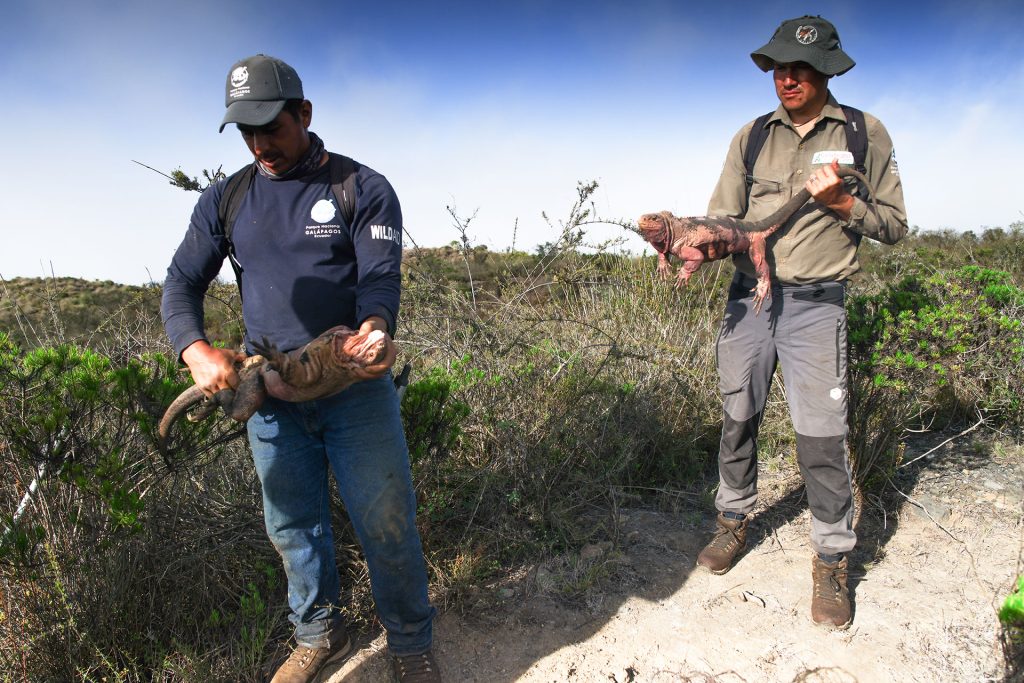
Dr. Jorge Carrión, our Conservation Director, collected relevant data on each pink and yellow iguana, tagging those without microchips for future identification. “We collected data on the biotic and abiotic components present within the established habitats of various species. Our focus was on species that have clear interaction with iguanas, such as cacti and woody plants. In order to obtain a detailed habitat description, we recorded environmental variables like ambient temperature, precipitation, and relative humidity. Additionally, we collected samples of iguana feces to gain a better understanding of their diet,” highlighted Carrión.
Part of the team was also assigned the task of replacing the memory cards of the camera traps network deployed throughout the iguanas’ habitat. The images captured by these cameras will be processed to learn more about reptiles’ ecology. This will help us understand the threats they face, particularly in their early life stages.
The IUCN Red List classifies the pink iguana as a Critically Endangered species. The population, already diminished to around 200-300 individuals residing on an active volcano, faces an increased level of vulnerability due to the potential threat of volcanic eruptions. This vulnerability is exacerbated by invasive species, such as rats, and feral cats, which have been repeatedly captured on camera traps and observed preying on iguanas during their early life stages.
Given the dangers posed by invasive species, Dr. Jorge Carrión stressed the urgency of taking action. He stated, ” It is critical to implement short-term management measures to counteract the impacts of invasive species and contribute to the population recovery of the pink iguana on Wolf Volcano.” This call to action emphasizes the pink iguana’s immediate threats and the importance of prompt intervention.
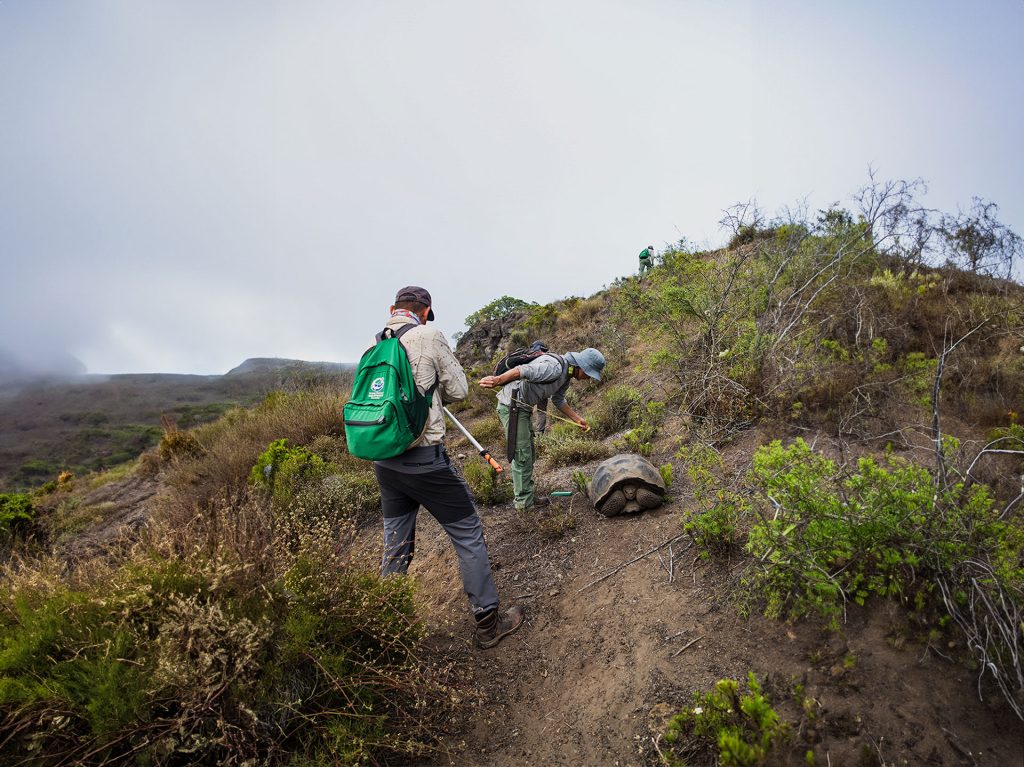
Giant Tortoise Monitoring
Another important aspect of the expedition was monitoring the giant tortoise population on Wolf Volcano and looking for specific individuals to incorporate into the breeding programs for the Floreana and Pinta species. These species now coexist with the Chelonoidis becki species, a native of the area. In 2008, a male hybrid tortoise was microchipped and successfully relocated to the Fausto Llerena Breeding Center in Santa Cruz, with all necessary biosecurity protocols. However, scientist Washington Tapia emphasized that a thorough analysis, including complete genome sequencing, is required to accurately determine its genetic ancestry.
It’s important to recognize that the C. becki species, which lives in an area of approximately 95 square miles to the north and west of the volcano, has seen its population increase to an estimated 10,000 to 12,000 individuals as a result of conservation efforts. Nevertheless, volcanic eruptions pose a constant threat.
The Threat of Guava, an Invasive Plant in Galápagos
The expedition also searched and delineated the area invaded by the introduced plant commonly known as guava, which was found on the west flank of Wolf Volcano. As a result, more than 800 plants were identified, with chemical control applied to over 140 of them. Fallen fruits were collected from the ground to prevent new seedlings from germinating, and iguana and tortoise feces samples were collected to analyze their contribution to this invasive species’ seed dispersal, with the goal of recommending appropriate measures to prevent future invasion.
Washington Tapia pointed out that, while the goal is to eradicate all guava plants, periodic monitoring will be required to eliminate the threat, not only for tortoises and iguanas but for the entire ecosystem. “For this reason, we will work hand in hand with the Galápagos National Park Directorate to combat this threat and allow Wolf Volcano to continue its natural dynamics free of invasive plants,” he emphasized.
Commitment and Passion to Protect the Iconic Species of Wolf Volcano
Research and conservation efforts for the species that live on Wolf Volcano will be intensified. The pink iguana, in particular, will be the focus of short and long-term conservation efforts outlined in the Conservation Plan for the next five years. We have just begun the first year of execution and will collaborate closely with the Galápagos National Park Directorate and other organizations to protect these unique species in the world.
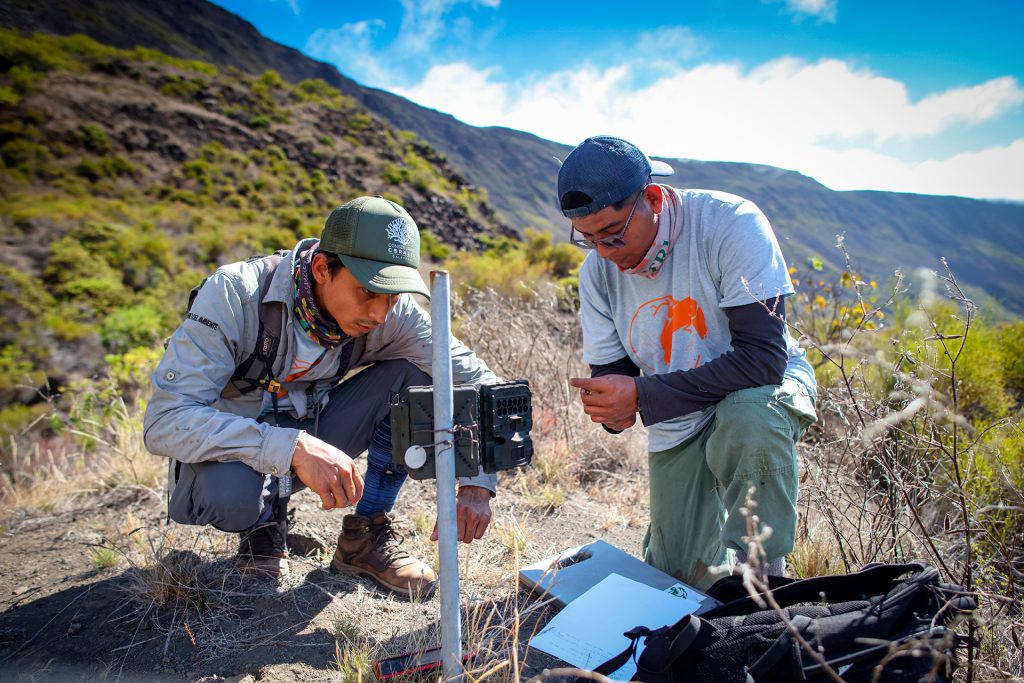
Our collective commitment drives us to ensure that Wolf Volcano remains a safe and thriving habitat for its remarkable inhabitants. The success of our conservation endeavors is made possible through the generous support of our dedicated followers, donors, and partners.
